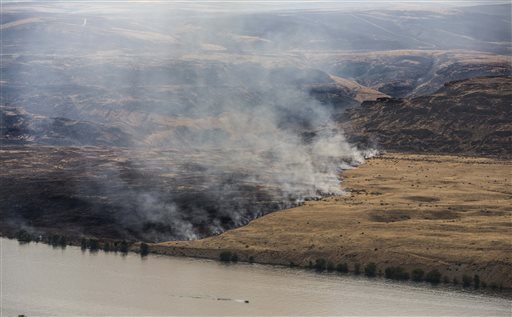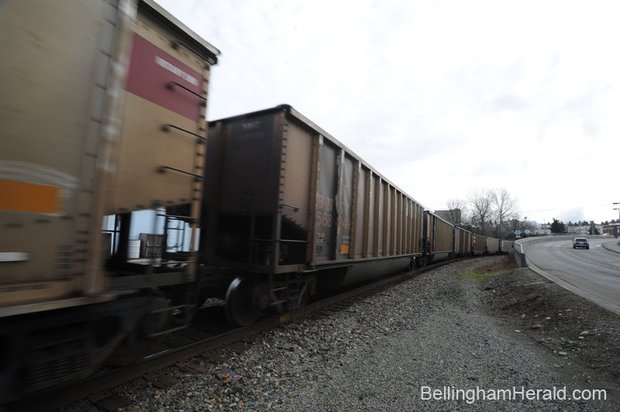August 1, 2013
By JOHN STARK — THE BELLINGHAM HERALD
Lummi Nation Natural Resources Director Merle Jefferson says the tribe is ready to send an official letter to the U.S. Army Corps of Engineers announcing its opposition to the Gateway Pacific Terminal project at Cherry Point – a move that could stop the federal permit process for the coal terminal dead in its tracks.
The Army Corps has the authority to grant some key permits that SSA Marine of Seattle will need in order to construct its three-vessel pier at Cherry Point. On other projects, the federal agency has refused to process permit applications if Indian tribes contend that those projects would violate their treaty rights as defined by numerous federal court rulings.
During a Wednesday, July 31, press conference, an Army Corps official stopped short of saying that Lummi Nation has the power to block Gateway Pacific. But she indicated that her agency might decide to stop processing its permits if the Lummis raise formal objections.
Muffy Walker, Army Corps of Engineers regulatory branch chief in Seattle, said her agency was aware that Lummi leaders had spoken out against Gateway Pacific, but the federal agency had not received a “formal response” from the tribe saying they see no chance of reaching an agreement with SSA Marine to compensate for the project’s impacts.
“If the Lummis come to that position, it will make us reassess the direction we are going,” Walker said. “We have denied permits in the past, based on tribal concerns.”
Jefferson said tribal officials had assumed that their position was clear in the 34 pages of objections they had offered the Corps and other regulatory agencies as part of the environmental study scope process. Among other things, tribal officials say the project will interfere with tribal fishing and disrupt an important cultural site.
Once Lummi officials learned that the Corps wanted a formal letter notifying them of the tribe’s position, the tribal council quickly agreed to draft that letter. Jefferson said that letter should be on its way to the Corps by Friday, Aug. 2.
Jefferson also stopped short of saying that the tribe has the power to block the project. He did say that the tribe has a strong legal position based on treaty rights.
Lummi officials took a non-committal stance on Gateway Pacific when it was first announced, saying the tribe would take no position until its impacts got thorough study. The tribal newspaper published a series of reports outlining benefits as well as drawbacks from the project, and reported that SSA Marine had provided the tribe with $400,000 to help the tribe pay for its own study of the project.
But by September 2012, after an upwelling of opposition from tribal members, tribal council representatives met on the beach at Cherry Point to announce firm opposition to the project. Later in the fall, tribal officials were outspoken in their opposition when county, state and federal officials convened meetings to gather public comments.
SSA Marine Vice President Bob Watters said his company wants to continue to work with Lummi Nation to resolve the tribe’s concerns on both fishing rights and possible disruption of ancient tribal burials believed to exist at the site.
“We are committed to addressing Lummi concerns in detail,” Watters said in an email. “Our approach will be first to avoid impacts, then to minimize unavoidable impacts, and finally, to mitigate and positively address what remaining impacts there may be in a mutually satisfactory way.”
Watters added that his company is now conducting a study on the impacts of vessel traffic to the terminal site, with input from Lummi officials.
Reach John Stark at 360-715-2274 or john.stark@bellinghamherald.com. Read his Politics blog atblogs.bellinghamherald.com/politics or follow him on Twitter at @bhamheraldpolitics.



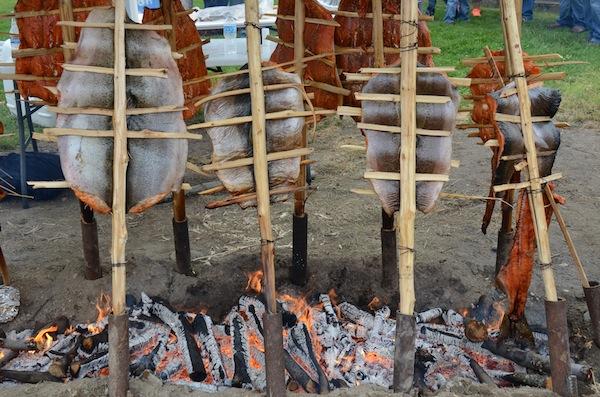
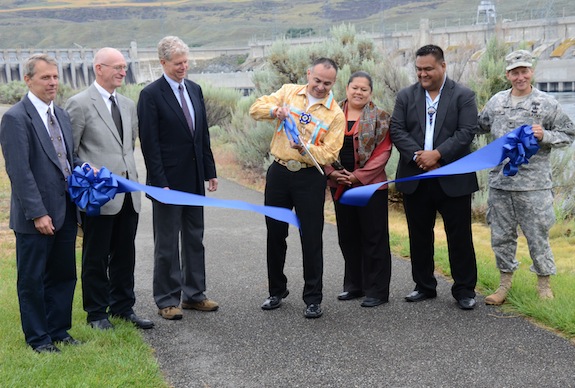





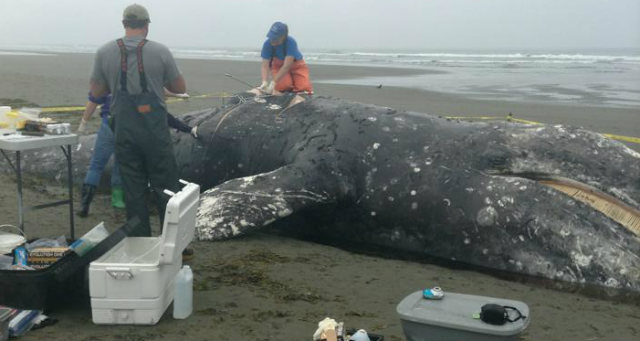

 July 24, 2013
July 24, 2013 
